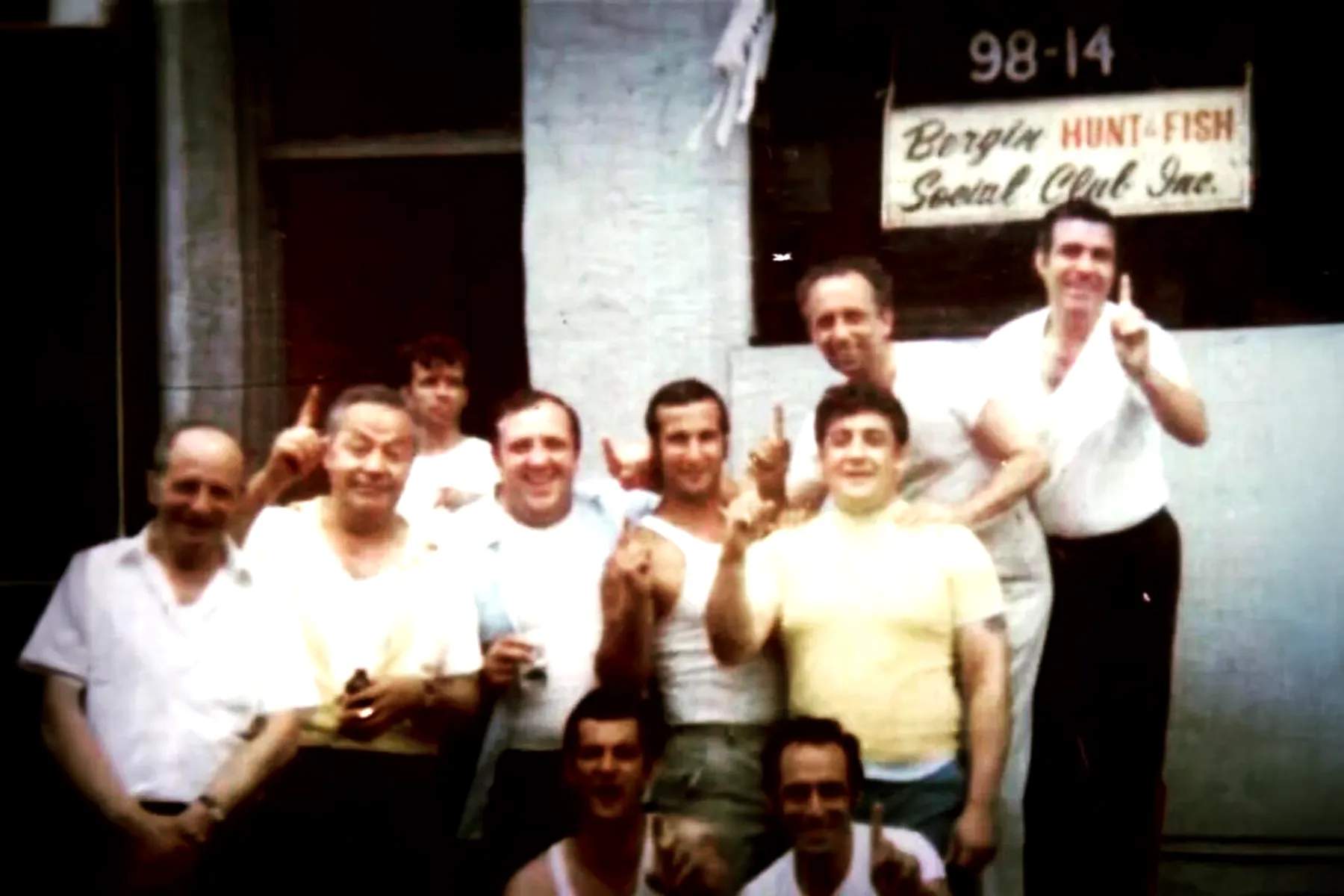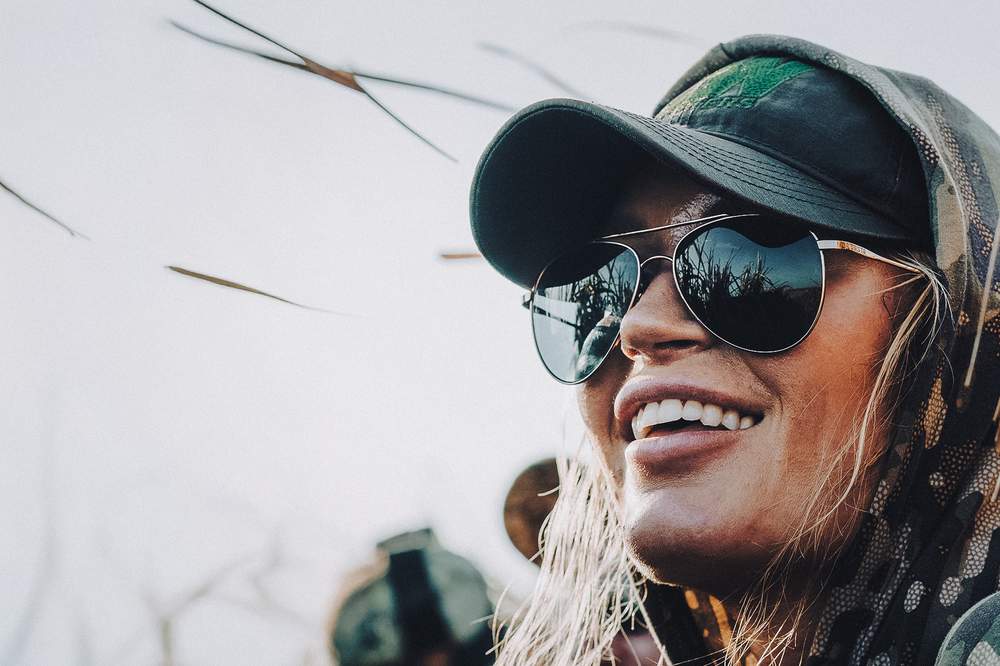John Gotti was an infamous mafioso and the eventual leader of the Gambino crime family. Known for his flashy suits and his ability to beat criminal charges, the Teflon Don or Dapper Don was the face of organized crime and a fixture in the public eye for much of the 1990s. Gotti’s organized crime roots can be traced back to his Ozone Park neighborhood of Queens, New York. John Gotti started as a local hoodlum who rose in the ranks of the Gambino crime family during the ’70s and ’80s. Despite the publicity and notoriety he received from a curious and concerned public, Gotti was a villain in every sense of the word, and every villain needs a lair. For Gotti, that lair was the Bergin Hunt and Fish Club.
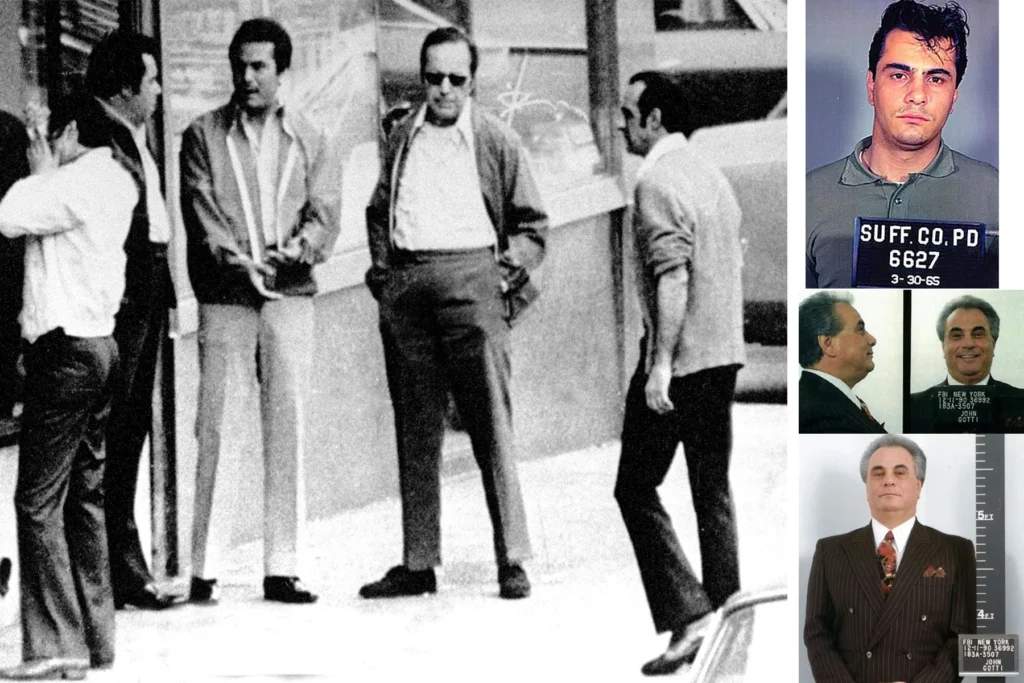
Behind The Bergin
The Bergin was opened by Gotti’s captain, Carmine Fatico, in the 1970’s who created the social club and named it after his old stomping grounds on Bergen Street, albeit with a slight spelling error. The not-so-secret headquarters of the Gambino family, Bergin Hunt and Fish Club was a fixture of New York's organized crime world. Its location was specifically chosen due to its close proximity to highways and JFK airport, a frequent target of the mob's hijackings.
The Bergin’s building was made up of two units sharing a single brick wall. Both sides had a bright red reinforced door along with two-way mirrors, large padlocks, and metal grates on the windows for added security and to keep out any curious onlookers. In one of the windows, slightly obscured by metal grates, was a hand-painted sign that read,
“Bergin HUNT & FISH Social Club Inc.”
The FBI’s Hunting & Fishing Excursion
Due to the tight-lipped nature of the mafia, not much is known about what went on behind those infamous red doors. What is known was discovered through wire taps placed by the FBI in hopes of charging the crew for their illicit crimes. It’s fair to assume that, just like many hunt clubs, there were more than a few bullets, knives, and guns lying around the Bergin. Still, from what is known, not much hunting or fishing ever happened, although more than one rival gangster was hunted out of that location, including Mafia Don Paul Castellano.
Social clubs were important to the mob; remember, these are guys without regular 9 to 5 jobs, they needed somewhere to hang out, relax, and conduct business away from prying eyes. Mob journalist Jimmy Breslin offered a glimpse into the inside of the infamous club not provided by wire taps. "He had a back office with a barber chair in it. He sat in that. And he had a bathroom, I mean a magnificent bathroom. They'd play cards at a table when you came in.”
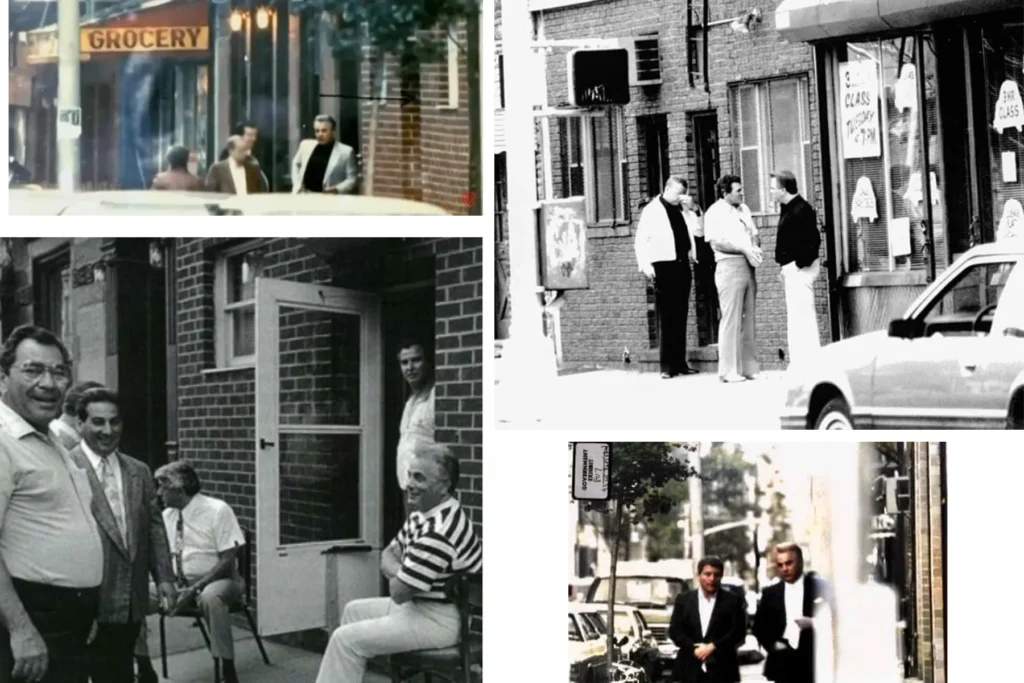
Al Guart of The New York Post reported on the Bergin and described the interior as “a dark, musty-smelling club, paneled walls were painted brown on bottom and white on top. On the right hung a painting that depicted a smiling Gotti superimposed on an undulating American flag. To the left, a large, round card table was folded up against the wall. Above it was a photo containing several sports figures, including football great Joe Namath. At the far end stood a small, unkempt bar. A back room housed the kitchen Gotti's crew once used to cook Italian dishes on Wednesdays.”
Bugging The Barber Chair
Another fixture of the Bergin was Gotti’s lavish barber chair, a seat he used often enough that the FBI deemed it the perfect spot to plant a listening device. It would be on that ‘bug’ that Gotti would disclose details surrounding his gambling rackets as well as plot to whack a union official.
In another recorded conversation taken at the Bergin and later played by the prosecution at his trial, Gotti was caught threatening one of his soldiers for not returning his phone calls,
"I need an example. Don't be the f-ing example. You understand me? You gonna disregard my motherf-ing phone calls, I'll blow you and that f-ing house up. If I hear anybody else calls and you take five days to respond, I'll f-ing kill you."
One of the keys to Gotti’s success was the fact that the neighbourhood loved him. He was generous with his people, and they rewarded him by keeping their mouths shut or, at other times, relaying important information. The flashy godfather was a fixture in Ozone Park, where he charmed local business owners and hosted extravagant Fourth of July celebrations every year featuring barbeques and fireworks shows.
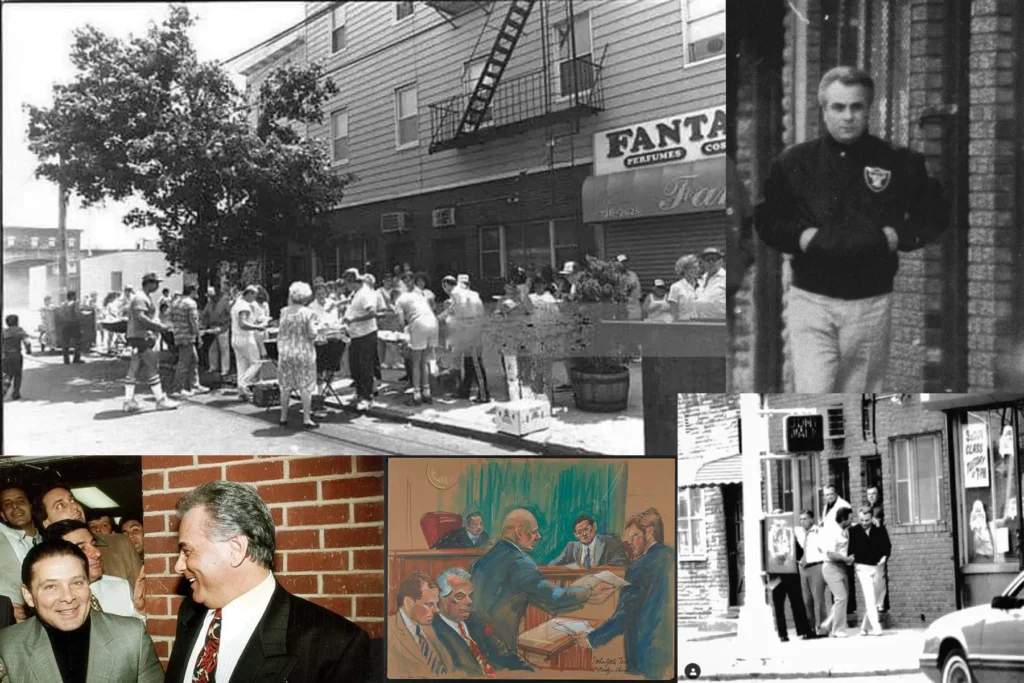
During a time when the city was wracked with crime, a common sentiment shared by many in the neighborhood was that Gotti and his crew kept the criminals out, and for that, they were grateful. However it wasn’t safer for everyone; local resident John Favara, the man who accidentally ran over John Gotti’s son, later ‘disappeared’ in 1980, only for his remains to be discovered years later, buried in a vacant parking lot in Ozone Park, just down the road from the Bergin Club.
In 1985, Gotti orchestrated the assassination of his boss, Paul Castellano, cementing his control over the Gambino crime family, where he then moved his operations from the Bergin to Castellano’s old Manhattan lair called the Ravenite Social Club.
The Bergin was open for almost 40 years but began to suffer a slow decline once Gotti was convicted and sentenced to life in prison in 1992. Gotti’s brothers took over ownership of the club, but by 2000, half of the Bergin had been leased as a butcher shop. By 2005, the other side had also been vacated, closing the final chapter in the notorious history of the Bergin Hunt and Fish Club.
He’s Gone & That’s That
The Bergin’s significance to the Gambinos and the neighborhood was seen on June 11th, 2002, just hours after the news of Gotti’s death from throat cancer. Local residents flocked outside the Bergin to light candles, place flowers, and share stories. During Gotti’s funeral procession, thousands of people travelled past the Bergin to pay their respects as Gotti made his way to his final resting place at St. John's Cemetery.
Good Gotti Must-Sees
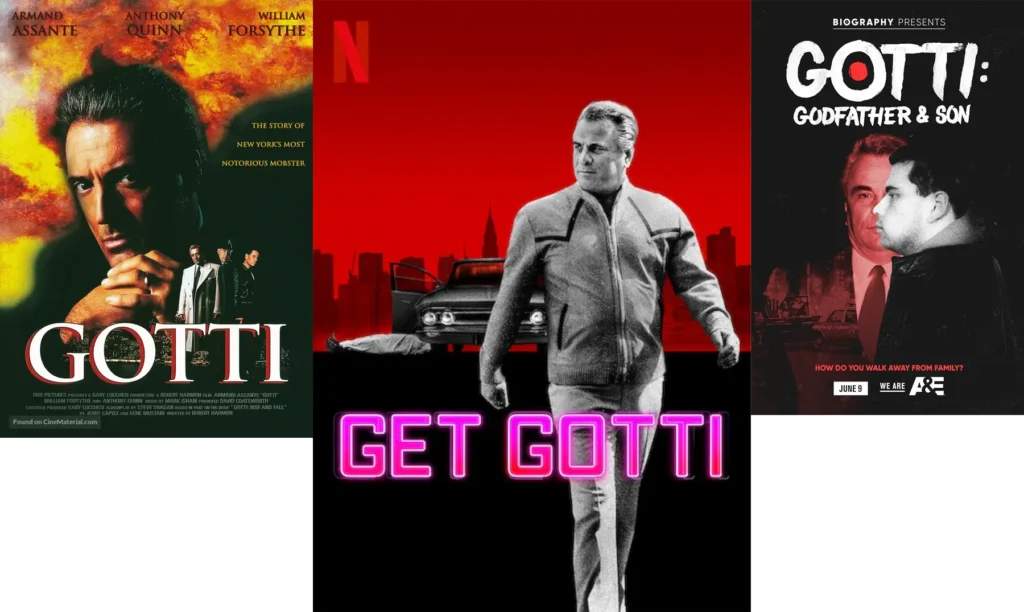
If you care to check out some more mob stuff in the Gotti vein, here are some "stand up" recommendations.
Actor Armand Asananti nailed it in the 1996 HBO release Gotti. The special was based on the Jerry Capeci and Gene Mustain book Gotti: Rise and Fall.
Get Gotti, which you can get on Netflix, gets served up as a solid three-part documentary. Folks who were interviewed for this were there… on both sides of the law. It shows viewers the battle it was for the FBI to finally cuff and stuff the infamous Dapper Don.
The A&E four-part miniseries Gotti: Godfather and Son is worth checking out. What makes it intriguing is that the filmmaker Richard Stratton was given unprecedented access to the Gotti family. Said family divulged what it was like to grow up inside of America’s “First Family” of organized crime.
